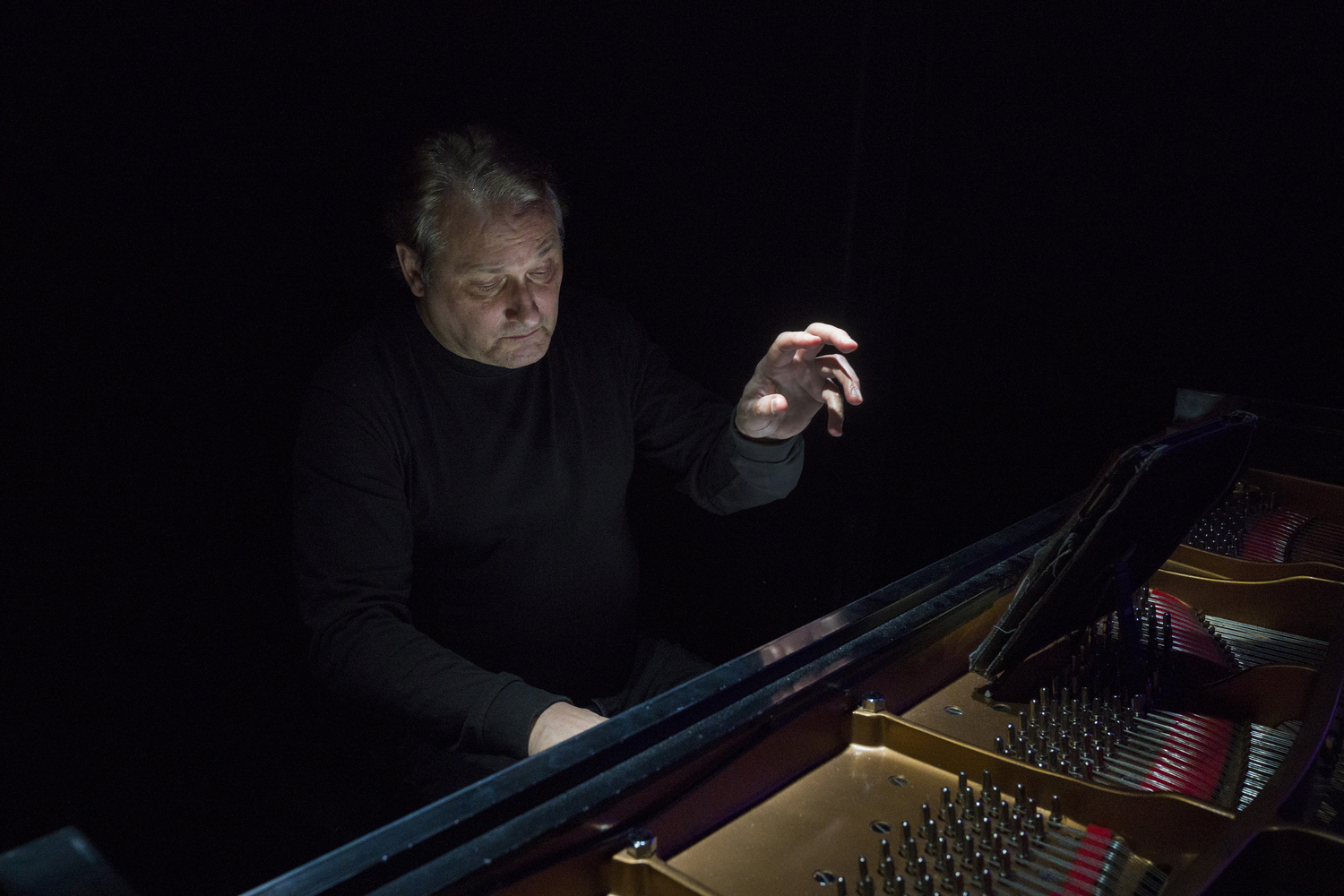Review: BASIL TWIST'S SYMPHONIE FANTASTIQUE at HERE - What Can Classical Music Learn From Twist?

I recently attended a production of Twist's Symphonie Fantastique, an interesting feast of visual delight choreographed to Liszt's piano transcription of Berlioz's masterpiece - it was Fantasia for adults. The performance took place in an intimate space, made even more so by draped red curtains walling off much of the room. Immediately upon entry, the intimacy forces your attention to the grand piano in the center of the theatre, positioned beneath a small grand drape in Austrian style. The square footage of the drape was far too small to conceal a human, but was clear that whatever we would be looking at was residing behind that curtain.
Before I could think any more about what I'd gotten myself into, Christopher O'Riley stepped into the space and sat at the piano. The lights lowered and the Austrian grand drape ascended to reveal a glass tank filled with water. For the rest of the evening, a parade of objects - that bled like sound - paraded through the water in choreographed dance. The visuals seemed overly simplistic at first, but as the evening progressed, their purpose became clear and impactful.
O'Riley's participation was paramount, shaping Liszt's transcription with exacting passion. His performance was brilliant. His playing was for us because we happened to be in the room, but it wasn't for us - it was for the music locked inside him that had to get out. He was completely entranced. When he stood for his bow at the end, he was drenched in sweat. I had to remind myself he hadn't been working in the giant tank of water - that all of his efforts had taken place on dry land. It was powerful.
In the beginning, I was slightly let down that my evening would consist of staring into a tank filled with dancing objects. I thought maybe there was something I didn't 'get.' As I studied their movement, I realized the visuals were complexly simple - exacting. They responded to the stimulus of the piano, moving in time with the music. As the piece progressed, I started to understand: it was a visual representation of our aural experience. This made me start to wonder - is this type of visual stimulus becoming more and more necessary? Some classical purists will claim that incorporating visual stimulus with classical music is 'dumbing down' our audiences, or not respecting their intelligence - but I would argue that it's meeting them where they're at. Catering to the masses while keeping the benchmark of quality higher than ever isn't cheapening the art form - it's adapting it. Twist has proven that you can engage your audience visually without diminishing the quality of the music - O'Riley was exceptional.
We are living in a time when completion rates matter, so digital content is produced with strict parameters regarding length. An effective YouTube video comes in at under 2 minutes and this approach is even more restrictive on our social media channels. Instagram limits a video post to 60 seconds, a story segment to 15, and twitter has a 280-character limit. Scrolling through our social feeds has enhanced this lack of strict, prolonged attention and we're currently taking in the world around us in bite-sized, gif length snippets. For better or worse, this is where we are. This is the audience we need to reach - the 60 second audience - and maybe visual stimulus is the way. In most concert halls, the audience is saturated with tufts of blue hair, driving the median age into the stratosphere. Sure, some of this is because of the ticket prices, some is because of the assumed formality of the art form, but some of it is because of the fear of boredom. In order to build a new, younger audience base, we have to adapt, we have to pivot - why not capitalize on the way we currently consume content? The research is there. How are concert halls leveraging it?
This revival of Twist's production, which premiered in 1998, could not come at a better time. The conversation is shockingly relevant and I hope that larger classical music institutions can take a page from his approach. Maybe it'll make a difference, maybe I'm wrong...but it's worth a try.
Go see what I'm talking about. Get tickets here.
Cover Image: Christopher O'Riley by Richard Termine
Reader Reviews
Videos

